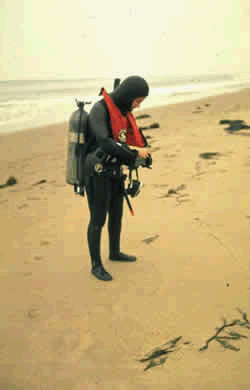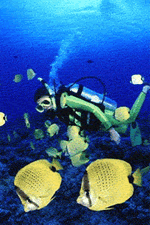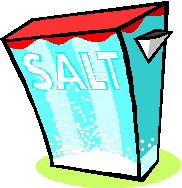Lesson 18: Solubility of Materials in Water
Textbook Readings
ScienceFocus 8
Pages 39-41
or
Science in Action 8
Pages 66-68
As you have seen from your readings and previous activities water regulates every part of our lives. In this series of lessons you will investigate how many industries use water (often called the universal solvent) to move and separate materials. Everyday items such as sugar and salt are processed and refined with water. Other important minerals such as potash and even gold need water for their refinement as well.
Background Information Let's explore how solubility can be used to make our lives better.
The Salt of the Earth
Can you imagine a world without salt? In hot dry climates, being without salt means certain death. Luckily, we don't have that problem here. But can you imagine popcorn with out salt - yuck!
How do we get salt? Where does it come from? And what processes are used to get it to our table? Let's find out.
The basic forms of salt mining are:
- rock salt mining
- solution salt mining.
Two examples of this process are:
- a. Solar evaporation
- b. Vacuum evaporation Use the following web sites to compare and contrast these two mining processes by answering the question below. mechanical production
- solar evaporation

 Exercise 5.2: Sugar Processing
Exercise 5.2: Sugar Processing
|
Technology Time - Scuba Diving
Scuba (self-contained underwater breathing apparatus) diving is a wonderful sport and people of all ages are enjoying the adventure it brings. But like all activities it comes with an element of risk.
Your blood contains many dissolved chemicals, including gasses. When a scuba diver breaths compressed air underwater, a larger quantity of nitrogen is dissolved in the blood streambecause of the increased pressure of the water above her. If the diver swims to the surface to quickly, the nitrogen will turn to bubbles in the blood stream. This is referred to as 'decompression sickness' or the 'bends'. This can be very serious and lead to paralysis. That's why it is very important that people new to the sport take courses from a qualified instructor. If the rules of diving are followed, it can be a safe and enjoyable experience.
|
|
|
 |
|
Buoyancy Control or Why Not to Fall Up!
One of the skills needed to be a scuba diver is buoyancy control. Fish do it all the time. Many fish have an air bladder in their bodies. If they want to go higher in the water column (closer to the surface) they add more air and they float higher. In the picture on the right, you will notice that the diver appears to be wearing a vest. That vest is used for buoyancy control.
Would you like to know more? Check out these web sites:
Buying Scuba Gear
Training and Safety
Diving British Columbia
Decompression Sickness
|
|
As the diver goes deeper, the air in her suit and buoyancy compensator (the vest) is squeezed due to the pressure of the water above her. The diver must add more air from his tank in order to achieve neutral buoyancy. That means that she is neither falling to the bottom or rising to the surface.
When the diver wishes to surface he must swim upward. But with less water over him now, the air in his lungs, suit and buoyancy compensator begins to expand. So now he must release air from his suit and compensator or he will rocket to the surface - and you know what that means. The bends!
If your interested in learning more about diving, check out these sites:
Scuba diving explained
Diving in tropical waters
Online scuba magazine
|
|
 |
|
|
© 2002 Alberta Online Consortium
|





